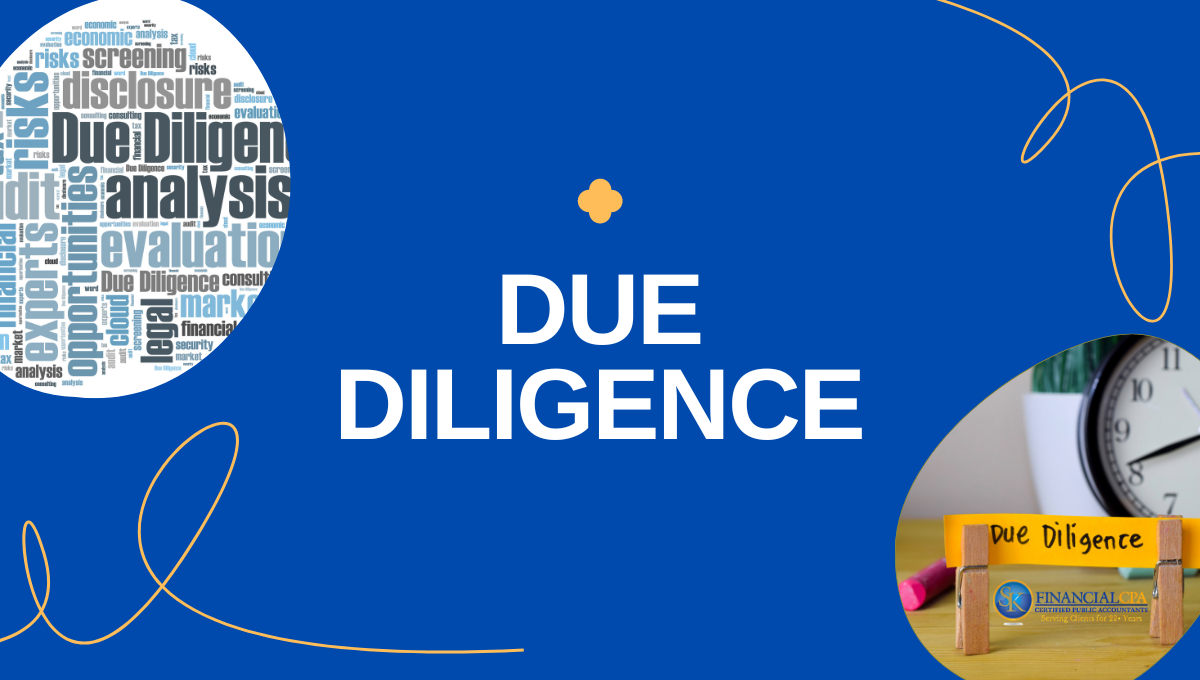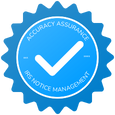
What is Due Diligence? Purpose, types and examples
Due diligence is the careful process of researching and verifying all facts about a potential investment, acquisition, or partnership before signing a deal. It helps uncover risks, validate information, and ensure that a decision is financially and legally sound.
In simple terms, due diligence is how businesses and investors make sure they’re buying the right thing at the right price with full knowledge of what they’re getting into.
Reliable and affordable: due diligence services in florida, US
What is Due Diligence?
Due diligence is the process of investigating and verifying the financial, legal, and operational aspects of a company or entity before entering a business transaction. This review minimizes risk and helps prevent costly mistakes by ensuring a full understanding of the opportunity.
Purpose of Due Diligence
The purpose of due diligence is to minimize risk. It allows companies and investors to:
-
Confirm that information shared by the other party is accurate.
-
Identify hidden risks such as debt, lawsuits, or operational weaknesses.
-
Determine the true value of a business or asset.
-
Strengthen their position during negotiations.
Example: Before acquiring a startup, an investor reviews its financial statements, intellectual property, contracts, and customer base to ensure there are no undisclosed liabilities.
Without due diligence, companies risk overpaying or facing unexpected legal or financial issues after closing a deal.
Types of Due Diligence
1. Financial Due Diligence
Examines a company’s financial statements, tax records, and revenue streams. The goal is to verify that profits, assets, and debts are accurately reported.
Example: Checking whether reported profits are consistent with bank statements and invoices.
2. Legal Due Diligence
Assesses all legal risks including contracts, licenses, and litigation history. It ensures the company complies with local and federal laws and that there are no ongoing disputes that could threaten the transaction.
3. Operational Due Diligence
Focuses on how the business actually runs. This includes its production capacity, supply chain, employee productivity, and day-to-day efficiency.
Example: A manufacturing firm reviewing supplier reliability before purchase.
4. Commercial Due Diligence
Analyzes the market position, competition, and growth potential. It helps investors understand whether the company’s business model fits long-term market trends.
5. Environmental Due Diligence
Looks at environmental risks and regulatory compliance.
Example: Verifying whether a factory meets environmental standards or faces future cleanup costs.
6. IT Due Diligence
Evaluates a company’s technology systems software, cybersecurity, and scalability. This is vital for modern businesses that rely heavily on data management and cloud infrastructure.
Hard vs Soft Diligence
Hard Due Diligence
Covers measurable data financial statements, tax filings, and legal documents. It provides a factual picture of a company’s health and compliance.
Soft Due Diligence
Focuses on intangible aspects like leadership quality, company culture, and employee morale. Even profitable businesses can fail after acquisition if the teams or cultures don’t align.
Due Diligence for Startups
Startups often lack long track records, so investors focus more on:
-
Founders’ experience and credibility.
-
Business model viability.
-
Product uniqueness and scalability.
-
Market potential and early customer traction.
Example: An investor reviewing a tech startup checks the founders’ past projects, the patentability of their product, and user growth metrics before investing.
Step-by-Step Due Diligence Process
Step 1: Planning and Preparation
Define what needs to be examined (financial, legal, operational). Assemble a team typically financial auditors, legal counsel, and industry experts.
Step 2: Information Gathering
Collect relevant documents contracts, tax filings, bank statements, and IP records. Conduct interviews with management and, if possible, site visits.
Step 3: Analysis and Evaluation
-
Perform financial ratio analysis and forecasts.
-
Review legal compliance and litigation risks.
-
Evaluate operational efficiency and strategic fit.
Step 4: Reporting and Decision-Making
Summarize findings in a report that highlights risks, opportunities, and key recommendations. Stakeholders then decide whether to proceed, renegotiate, or exit the deal.
Common Issues and How to Avoid Them
-
Unclear scope: Define what will be reviewed before starting.
-
Wrong team: Include experts in law, finance, and IT to avoid blind spots.
-
Overlooking red flags: Investigate anomalies immediately.
-
Rushing the process: Allow enough time for a full review shortcuts lead to costly mistakes.
Example of Due Diligence
Scenario: Company A plans to buy Company B for $5 million. During financial due diligence, auditors discover that $700,000 of reported revenue came from one-time, non-recurring sales. After renegotiation, the purchase price drops to $4.3 million saving the buyer from overpaying.
Conclusion
Due diligence is more than a box-checking exercise. It’s a strategic safeguard that protects investors and businesses from costly surprises. When done properly, it reveals the true risks, value, and potential of any transaction helping decision-makers move forward with confidence.
FAQs
1. What is due diligence?
Due diligence is a comprehensive review and analysis process performed before a business transaction, such as a merger, acquisition, or investment. It aims to assess the risks, opportunities, and value of the transaction by evaluating the target company’s financial, legal, operational, and strategic details.
2. Why is due diligence important?
Due diligence is crucial because it helps investors and companies understand the full scope of a potential transaction, identify any hidden risks or liabilities, and verify the information presented by the other party. This process ensures that decisions are made based on thorough and accurate information, reducing the risk of unexpected problems post-transaction.
3. How long does due diligence typically take?
The duration of the due diligence process can vary significantly depending on the complexity of the transaction, the size of the target company, and the thoroughness of the examination required. Typically, it can range from several weeks to several months.
4. Who performs due diligence?
A team of specialists suited to the transaction's nature typically performs due diligence. This team can include financial auditors, legal experts, business consultants, IT specialists, and other relevant professionals.
5. Can due diligence be skipped if the transaction is small?
While the scope and depth of due diligence might vary with the size and risk of the transaction, it is generally not advisable to entirely skip the process. Even small transactions can carry significant hidden risks that can lead to substantial losses.
6. What is included in financial due diligence?
Financial due diligence involves analyzing the target company's financial statements, reviewing its financial performance and metrics, assessing debt levels and liabilities, and understanding its cash flow and profitability.
7. What does legal due diligence involve?
Legal due diligence includes reviewing all legal documents related to the company, such as contracts, leases, litigation records, intellectual property rights, and compliance with relevant laws and regulations.
8. Why is IT due diligence important?
IT due diligence is crucial for assessing a company's technological capabilities, understanding its IT infrastructure, software, data management, cybersecurity measures, and how technology supports its business operations.
9. What does operational due diligence examine?
Operational due diligence assesses the efficiency and effectiveness of a company’s day-to-day operations. It looks at production capabilities, supply chain management, employee productivity, and operational risks.
10. What are the potential consequences of inadequate due diligence?
Inadequate due diligence can lead to overpaying for an asset, unforeseen legal and financial liabilities, operational challenges post-acquisition, and, ultimately, failure to achieve the intended benefits of the transaction.
11. How do you prepare for a due diligence process?
Preparation involves defining the scope of the due diligence, assembling the right team of experts, and collecting preliminary data and documents from the target company for review.
12. What are some common tools and resources used in due diligence?
Common tools include financial analysis software, legal databases, industry reports, market analysis tools, and specialized due diligence software platforms that help in organizing and analyzing data.
13. How can technology impact the due diligence process?
Technology can streamline the due diligence process through the use of data rooms for secure document sharing, analytical tools for faster data analysis, and AI-driven platforms that can predict potential risks and outcomes more efficiently.
Follow SKFinancial on Facebook / Twitter / Linkedin / Youtube for updates.












